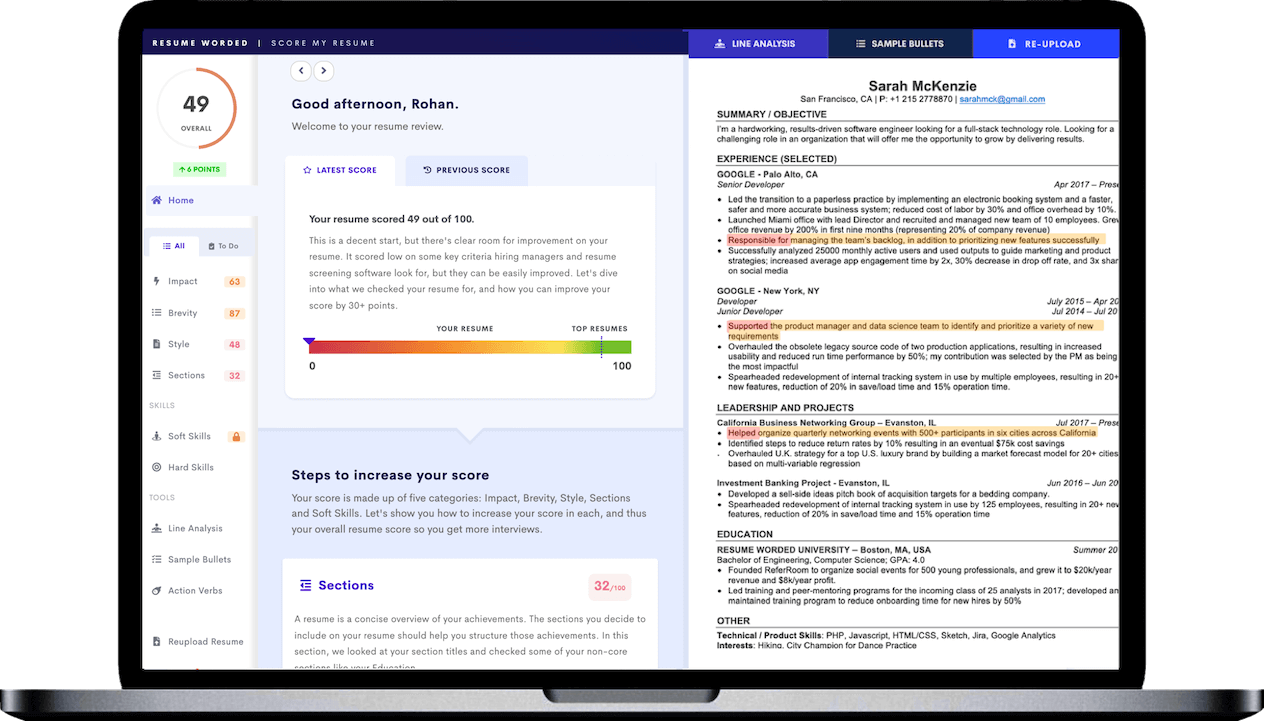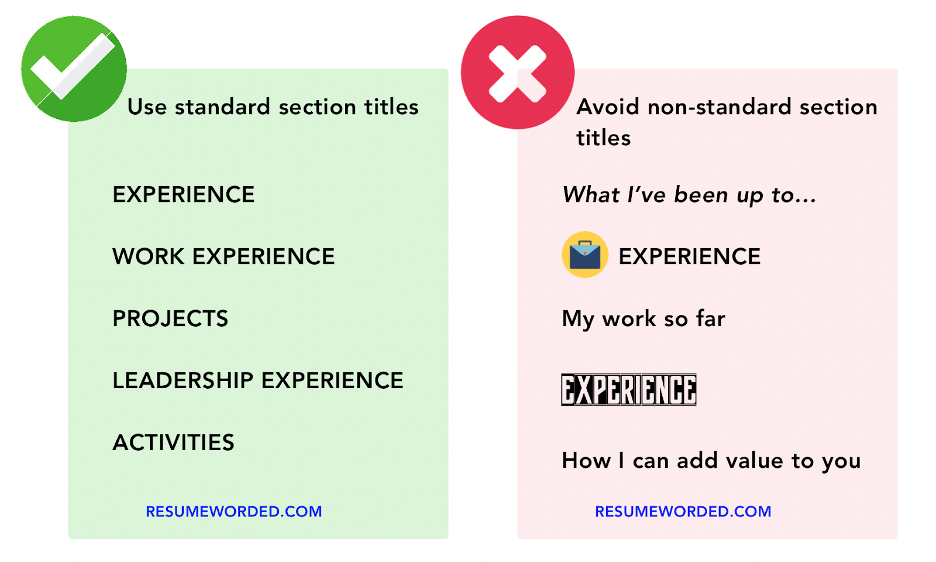In the post-pandemic world, freelance work isn't just commonplace - it's a critical cog in our economy. In 2025 we see a continued rise of remote work and digital nomadism, employers’ growing interest in versatility and adaptability, and the increasing acceptance and even preference for freelancers in many industries.
If you’ve done freelance work yourself, you should consider adding it to your resume, particularly if it encompasses the same skill set you’ll be using at the position you’re applying for.
In this article, we’ll discuss how to effectively incorporate your freelance experience on your resume, thereby giving you an edge in this fiercely competitive job market.
When to include freelance work on your resume
Deciding what to include or exclude when you write freelance work on your resume can be a balancing act. Here’s our simple advice:
Cover up employment gaps
Not everyone freelances full-time, of course, but listing freelance work on your resume can help cover any gaps on your resume where you weren’t directly employed (for any reason). Listing freelance projects in that time can show employers that you kept your skills engaged.
Highlight skills and experiences relevant to the new job
Even if you’ve been regularly employed, you should consider listing freelance work that demonstrates relevant skills. This is especially true if you’re applying into a field that you haven’t worked for a traditional employer in. As an example, if your background is in medical coding, but you’d like to get into game design, you should definitely list any gaming projects you’ve completed (even if they weren’t for a client).
Highlight 'big name' clients
Lastly, you should list your freelance work if your clients are particularly impressive (and, ideally, related to the field you’re applying for). If you’ve written for Forbes as a freelance writer or you’ve done web development for a recognized firm, you should include it.
Related: Crafting a Standout Business Owner Resume in 2025
When to exclude freelance work from your resume
While we generally recommend that you put freelance work on a resume, there are certain situations where it might be less beneficial:
Ignore very short projects
Very short or one-off projects (such as a blog entry on a low-traffic website) shouldn’t be listed, unless they’re with a highly prestigious client, you had very high impact at the company, or you need to show skills that aren't clear from the rest of your resume.
Don’t break NDAs
If you’ve worked with confidential client information (or the projects themselves are confidential), don’t break any NDAs by including them in your resume. However, even if they are confidential, there are ways to list confidential experiences on your resume without breaking any NDAs.Feel free to ask past clients to serve as references if you don’t have traditional employers to serve in that role.
Omit irrelevant freelance work
You shouldn’t aim to include every project or client you’ve worked with (unless it’s a short list). Your goal should be to pick the most relevant freelance work you’ve done, with the best projects or accomplishments included, while ideally keeping your resume one page long.
If you’re applying for a full-time graphic designer position, for example, you should include your graphic design work - but leave off your wedding photography side job.
How to format freelance work on your resume
Once you know which freelance work you’d like to include on your resume, your next step is to choose the right format. The type and extent of freelancing work you’ve done can help you decide what format to use.
Before we dive in, if you’d like to see some free examples of proven one-page resumes that you can base your own on, click here. You can use one as a template to tailor it to your own background based on the industry you’re in.
In a single entry on your resume
If you have completed multiple smaller or short-term projects and you’d like to group them all together, you can create a single listing (similar to an employer) for “freelance” or “consulting.”
Here is how to list your freelance work as a single entry on your resume:
- Come up with a company name or title to group your freelance experiences with.
- Choose a 'job title' (such as Freelance Web Developer, SEO Consultant, Copywriter, or Editor). Try to include a similar job title to the job you are applying for.
- Write a short blurb that describes the kind of work you do (including the number of projects you’ve completed, if you wish).
- Individually identify a few of your best projects and write 2-3 bullet points under each one, as shown below (for more bullet point examples, see the next section).
Under individual clients
Some freelancers work primarily for a few clients. If that best describes you, you may wish to list your client as you would an employer - include your job title, dates, location, and bullet-pointed accomplishments.
This format can also help you highlight big-name clients and the work you’ve done for them.
As selected projects with individual clients
Alternatively, if you’ve worked a lot with a single client and have some stellar projects that you’d like to highlight, you can list the client as an employer (like above) and include the project highlights.
Remember to mention clearly somewhere in the description that you worked as a freelancer or you were on a freelance contract. Don't deceive hiring managers into thinking this was a permanent role as that could hurt you in reference checks!
As separate entries
For those who have worked in multiple roles as a freelancer (such as writing and editing, or transcribing and landscaping), you may wish to list your roles as separate entries.
Doing so is more important when the freelance work you’ve done is more varied, as it will give you the opportunity to highlight a greater variety of skills and accomplishments.
When listing freelance work on your resume, you should aim to showcase relevant transferable skills and accomplishments. Upload your resume to the tool below to find out if you have listed your strongest and most relevant freelance experience and accomplishments.
Resume bullet point examples for freelancers
Bullet points, in your Work Experience or Projects section, are key to making your resume hard-hitting and keeping the hiring manager focused on what you can offer them.
In general, bullet points should follow a simple format: lead with a strong action verb, reference the skill you used (or see industry-based skills and keywords), and include a numerical value to show how much of an impact you made.
Use the tool below to get a list of industry-based skills and keywords to add to your skills section.
Freelancer artist, illustrator, or graphic designer
Consider this example for an artist:
- “Illustrated and developed numerous concepts, including sketch and drawing, to support the production department in achieving a 100% delivery of projects within set targets/deadlines”
- "Designed online customer support center comprising of a self-service knowledge base and interactive chat; reduced customer support calls by 45%"
These leads with strong, relevant action verbs to tie into artistic skills (supporting the production department) and show reliability (100% delivery rate).
Freelance photographer
Your leading verb will often tie directly into your skills, meaning some bullet points can be short and sweet. This example is for photographers:
- “Photographed 20+ clients for headshots, holiday cards, and glamour shots"
Including the number of clients you’ve worked with and the types of photographs you’ve done will further inform the hiring manager about your capabilities.
Freelance web developer
Remember to emphasize your best accomplishments whenever possible. As a web developer, for example, you might include something along the lines of:
- “Redesigned the company's website introducing responsive design which increased the company's conversion rate by 220%”
- "Redesigned company's homepage and lead generation forms using only existing site components; reduced bounce rates by 40% and increased leads by 15% "
- "Contributed to TensorFlow, an open source machine learning library, through design discussions, code reviews, and commits; implemented ~5,000 lines of code in 6 months"
- "Streamlined data integration processes and standardized data feeds across systems, reducing data latency from 10 days to 1 day"
Along with describing your skill at “introducing responsive design”, the first bullet point tells the hiring manager that you improved your previous client’s conversion rate substantially - with no room for subjectivity.
Freelance writer
You may be able to work multiple accomplishments into a single bullet point, and don’t be afraid to. Take this example for writers:
- “Wrote 12 articles on consumer psychology and entrepreneurship, generating 25,000 page views, 4,000 re-tweets, and 3,500 newsletter subscribers"
- "Developed a travel and lifestyle blog generating 30k+ unique users per month; weekly newsletter has 20k+ subscribers"
- "Established brand strategy and marketing campaign, utilizing social media, guest blogging, and affiliates to grow awareness and build brand loyalty; currently have over 18k followers across all social media platforms (as of 10/2021)"
The more quantitative information you can include (in terms of your impact), the more value will be added to your application.
Related: How To List Self-Employment on Your Resume
Choosing the Right Job Title for Your Freelance or Self-Employed Role
Choosing the right job title for your freelancing or self-employed gigs is an essential part of accurately representing your professional experience (and including the right keywords on your resume).
Here are a few job title examples to help you brainstorm:
- Freelance Graphic Designer: This title is perfect if you're applying for a graphic design position and your freelance work consisted primarily of graphic design projects. This clearly tells the hiring manager what kind of freelance work you've done.
- Independent Contractor - IT Consulting: If you've been working as an independent contractor, indicating your specialization can provide clarity. For instance, "IT Consulting" indicates that you have been doing consulting work in the IT sector.
- Self-Employed Business Consultant: If you owned a business where you provided consulting services, this title accurately describes your role and emphasizes your entrepreneurial experience.
- Freelance Content Writer: For professionals who write across various mediums like blogs, articles, white papers, and more, this title clearly communicates your expertise.
Remember, while these titles should reflect the type of work you were doing as a freelancer or a self-employed professional, they should also be in line with the job you're applying for. Try to choose a job title that matches the terms or keywords used in the job description.
Moreover, don't shy away from using 'freelance', 'self-employed', or 'independent contractor' in your job title. Employers value this type of work experience, and these terms can help to set the right expectations.
Use Score My Resume to check your freelance experiences
You can use our free, AI-powered resume review tool (Score My Resume) to get an idea of any areas you can brush up easily. Run your resume through a spell checker and/or Grammarly to make sure you haven’t left any typos.Lastly, remember to include a link to your online portfolio if you have one. This gives hiring managers a bounce point to see examples of your work.










